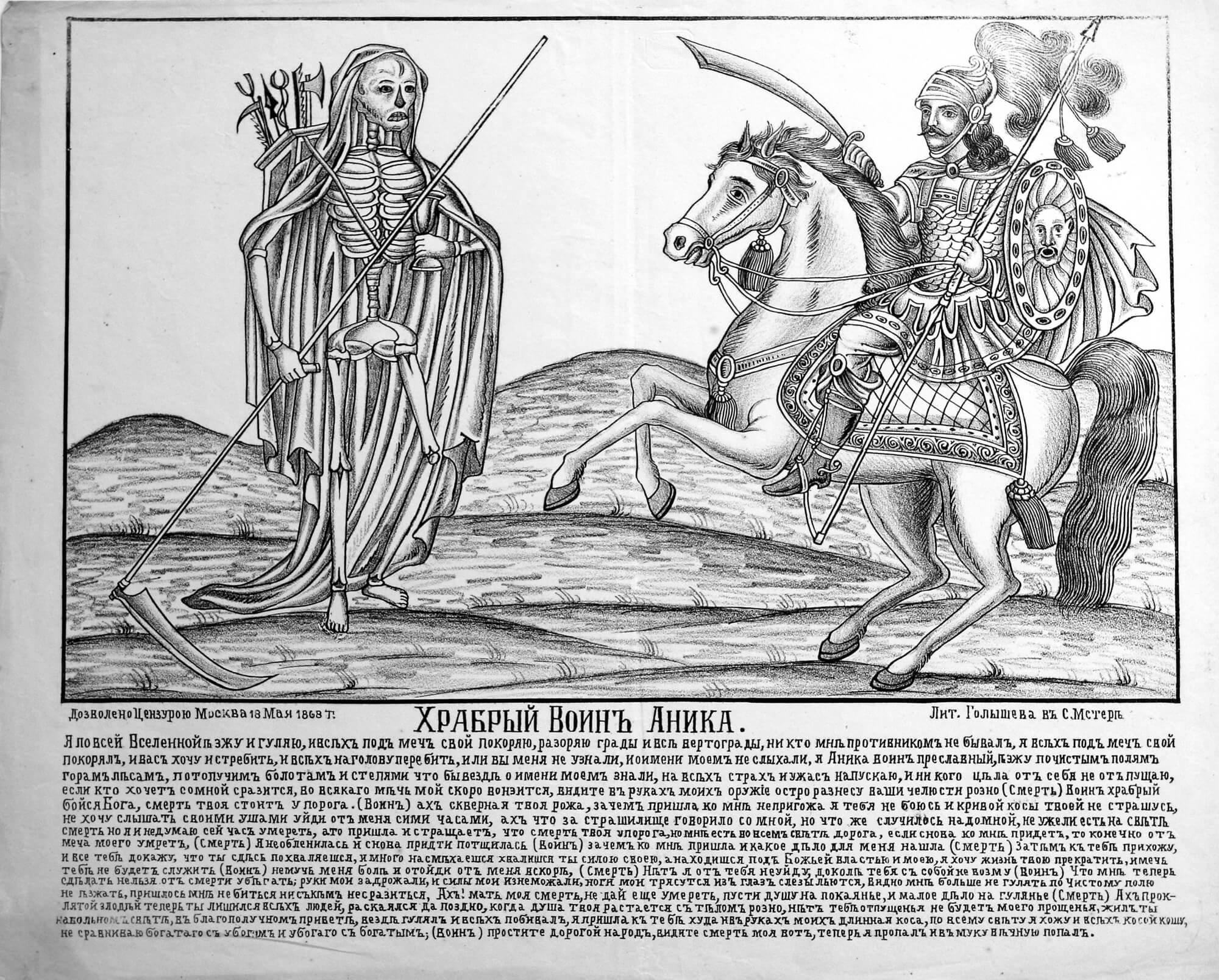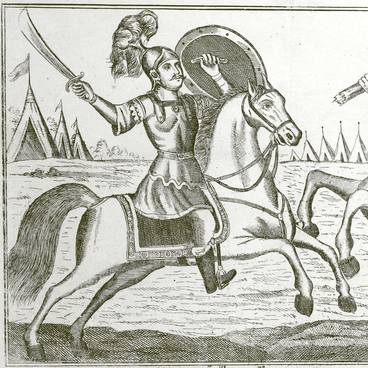Many scenes of popular prints had primordially been of foreign origin, but firmly entrenched in Russian folklore, becoming folk poems or fairy tales, and even turning into fixed allegorical expressions. The poem of Anika the Brave Warrior refers to such folk ‘spiritual poetry’.
Anika the Brave Warrior is a popular print made by lithographic method.
Anika the Warrior became a character of fairground farcical performances and puppet shows, which were once beloved in Russia. The whole plot of this folk play was concentrated on the fact that Anika endlessly boasted of bravery, and in the final saw Death, certainly with a scythe, and got frightened and asked for mercy. Sometimes Petrushka came to the aid of Anika, chasing Death away with his stick.
Being a collective image, Anika the Warrior is a narrow-minded, cocky soldier, a braggart who cowards at the first fight with a serious opponent. Anika the Warrior is included into the saying ‘Anika the Warrior is sitting and howling’.
Anika the Brave Warrior is a popular print made by lithographic method.
Anika the Warrior became a character of fairground farcical performances and puppet shows, which were once beloved in Russia. The whole plot of this folk play was concentrated on the fact that Anika endlessly boasted of bravery, and in the final saw Death, certainly with a scythe, and got frightened and asked for mercy. Sometimes Petrushka came to the aid of Anika, chasing Death away with his stick.
Being a collective image, Anika the Warrior is a narrow-minded, cocky soldier, a braggart who cowards at the first fight with a serious opponent. Anika the Warrior is included into the saying ‘Anika the Warrior is sitting and howling’.






